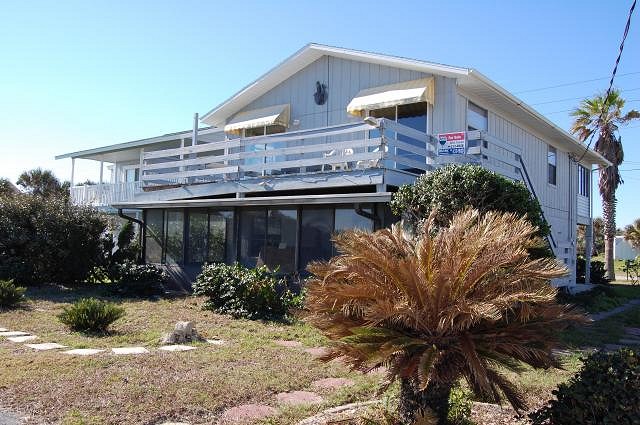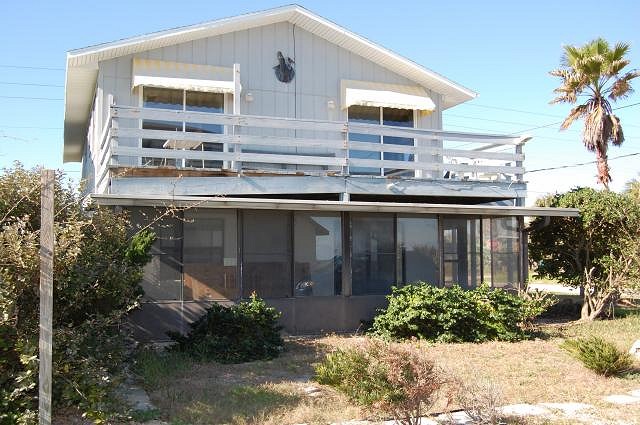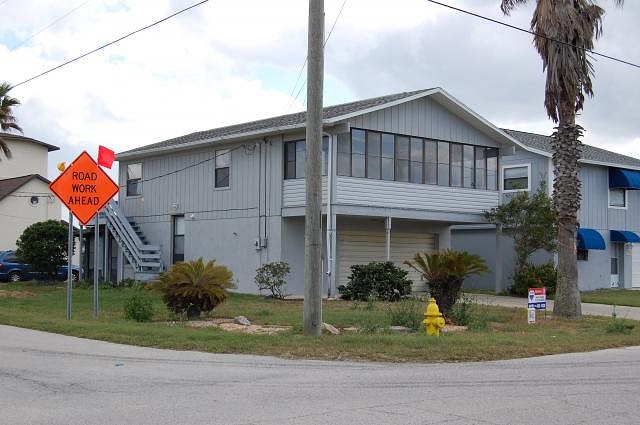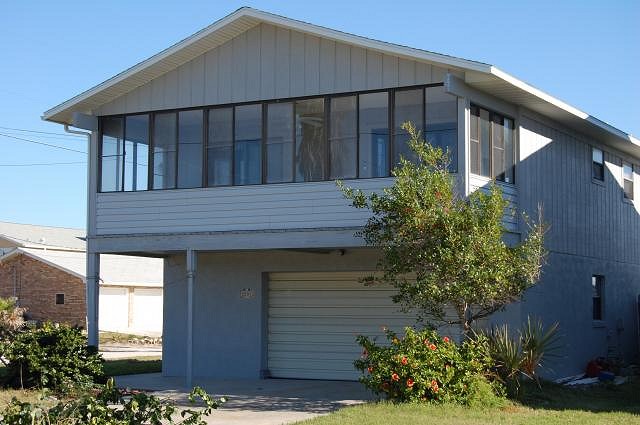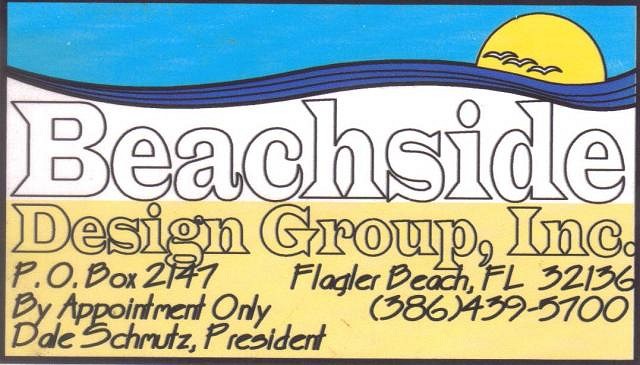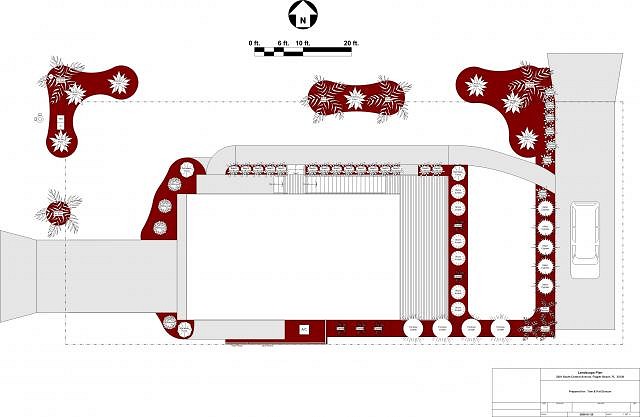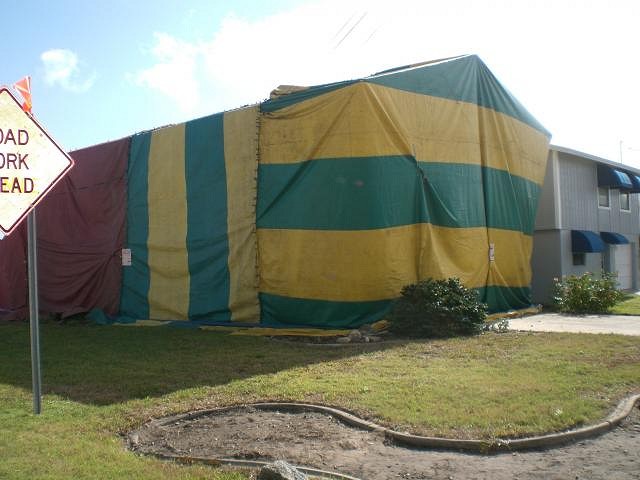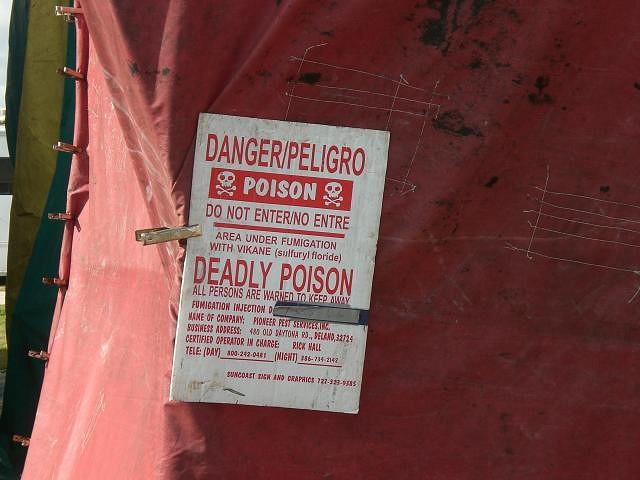Tiki Central / Home Tiki Bars / Blowfish Bar – Flagler Beach, FL
Post #621379 by TikiTomD on Wed, Jan 18, 2012 8:04 AM
|
T

TikiTomD
Posted
posted
on
Wed, Jan 18, 2012 8:04 AM
Mahalo, Wendy, for your visit and appreciative feedback. That remodel was preceded by a much larger renovation effort to create a livable home from a hurricane damaged, neglected shell of a house that had largely succumbed to the severely corrosive Atlantic coastal environment, as you will see in the next several posts. In the end, we had a fine blank canvas in which to introduce Tiki as well as the Hawaiiana we had collected during our vacations to the islands. What follows is a bit of a retrospective on how we got to where we are on our beach house, starting with a time before there was Tiki. It all began with a long dog walk in December 2007. We were spending our holiday break in a beach cottage adjacent to and just south of the Topaz Motel in Flagler Beach. As we were walking our two standard poodles along Central Avenue, ten blocks south of the Topaz and one block west of the coastal highway, A1A, Pat noticed a “For Sale” sign on a two-story home with a great view of the ocean. She had been wanting a beach home here ever since I brought her along on visits while she was my high school sweetheart many decades ago, before she became my wife. We had seriously looked at buying in the past, but the price for anything close to the ocean, even vacant land, was prohibitive. I pretty much dismissed this case as well, thinking it would also be exorbitant despite its obviously deteriorated condition. I was wrong, and after a phone call to the realtor and a walk-through, we immediately entered into a contract to buy, with the usual contingencies. The house had just gone on the market that day. It was fortunate that we acted without delay, as two other contracts were also placed on the house right behind us, and the parties were hoping that the buyers ahead of them would drop out. It was obvious, even before the home inspection that this was going to be a real “fixer-upper.” None of the sliding glass doors and windows could be opened, corrosion having welded the aluminum sliding surfaces together. The exterior wooden stairway and upstairs porch deck were unsafe to walk on, due to fastener corrosion and wood rot. Boards were literally falling off. Portions of the wood siding had either rot or insect damage. The aluminum porch enclosures at ground level and upstairs were severely corroded and leaking. There were issues with plumbing and wiring, and water damage was evident on walls, ceilings and cabinets. Paradise was not going to be so easy or cheap, after figuring in the effort and costs to make the place livable...
After we closed on the property in February of 2008, I consulted with my brother-in-law, Darrell, who was a state-certified General Contractor before his retirement to nearby Palm Coast. It was clear that hiring a general contractor to do all that was required would be far too expensive for my budget. Florida law allows a building permit to be issued to the owner of a property (owner-contractor), providing that the owner personally supervises the work and hires licensed subcontractors for any work done by others. This was to be my path. Darrell would advise me on who I could trust as subcontractors in the area, determine when to call for inspections and interface with the building inspectors (really important), and do some of the work himself, particularly the drywall work for which he had many years of experience. Darrell also had many ideas on how to update the place, which was built in 1984. I was to spend the next year on the road back and forth between my full-time technical job at the Cape and my home renovation project. The Palm Coast metro area, including most of Flagler County, was, until recently, the fastest growing in the United States. All of the associated construction supported a well-staffed county building department, with experienced building officials, engineers and inspectors. The City of Flagler Beach has its own building department, but uses the county staff for the permit approval and inspections. After Hurricane Andrew, the Florida Building Code greatly strengthened its hurricane and wind-driven debris mitigation requirements, and my beach house is seaward of the 120-mph coastal wind zone line. All of these factors, when combined, meant I had to have a very comprehensive set of plans to get a building permit, requiring the services of a designer, architect and registered professional engineer (structural). It was a difficult and costly process. Since I didn’t plan to install hurricane shutters, the new exterior sliding glass doors, windows, main entry doors, and garage door all had to be state certified for the wind and debris loading, requiring a test and a report approved by a registered professional engineer to be on file with the state. There is a real asymmetry in the ordinances: one can let a building deteriorate severely with no interference from government, but if you want to fix anything up, you’ve got to run an expensive gauntlet with multiple government agencies. It took almost three months (June 2008) to get the building permit issued. Here was my designer...
Before even embarking on renovation, I had to remove a bunch of Washingtonia Palm Trees that had been foolishly planted right beneath power, cable TV and telephone lines. These palms rapidly grow to over 100 feet in height, though in Florida they generally are struck by lightning long before they reach mature height. This required a tree removal permit from the City, which in turn required a landscape plan to show how I would compensate for removed trees with new ones. Here’s what I prepared myself and gave the City in order to obtain the permit...
After a City inspector visited the property and gave me the go, I brought in a landscape developer with heavy equipment to remove the trees and grub out the overgrown shrubs next to the house, as well as remove a bunch of gravel that was scattered all over the east end of the property. As soon as this was done, I called in an Ormond Beach pest control contractor to tent and fumigate the house, as recommended by the home inspector, based on the possibility of drywood termites in the siding...
With that, the home was ready for start of demolition. To be continued, for it was yet a long way to Tiki... -Tom |

